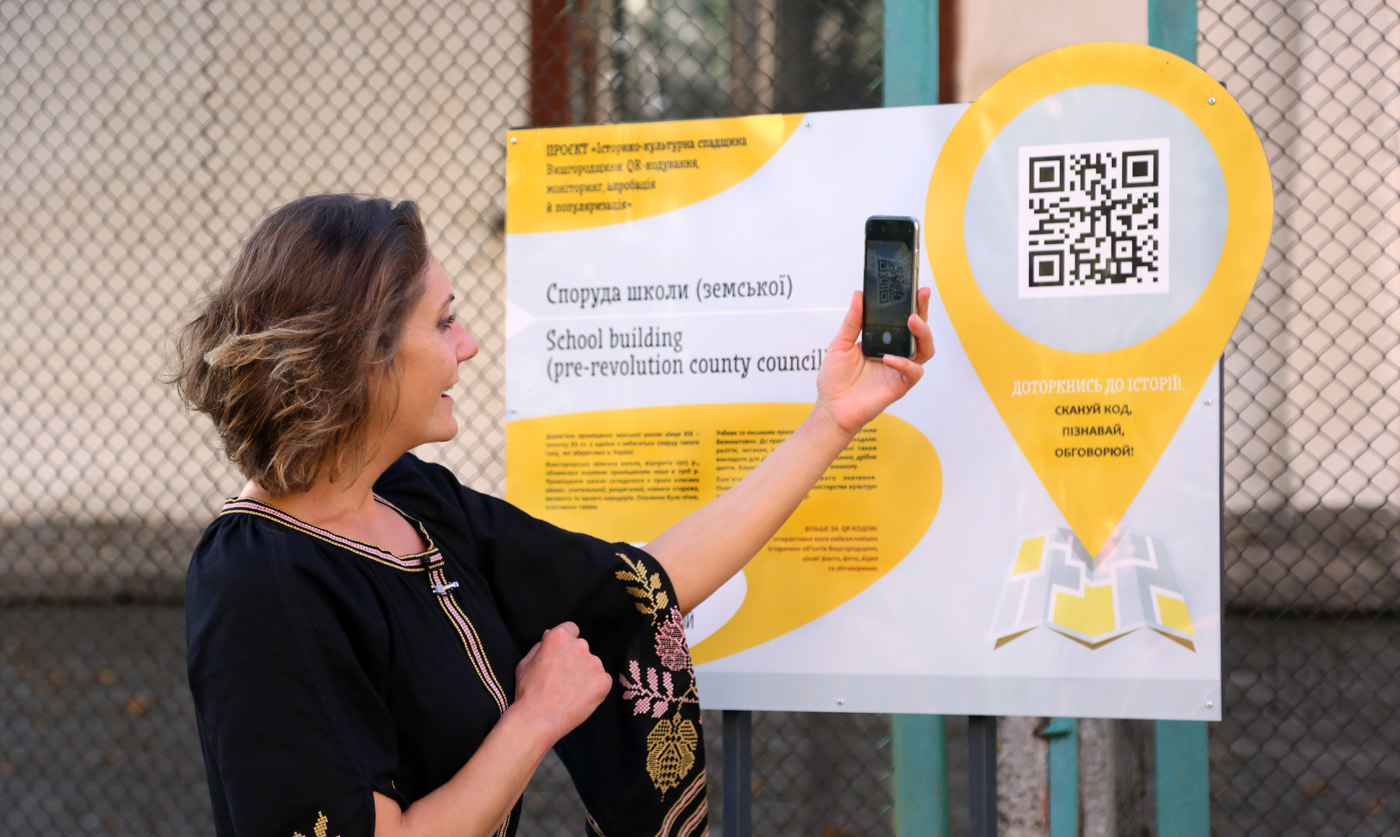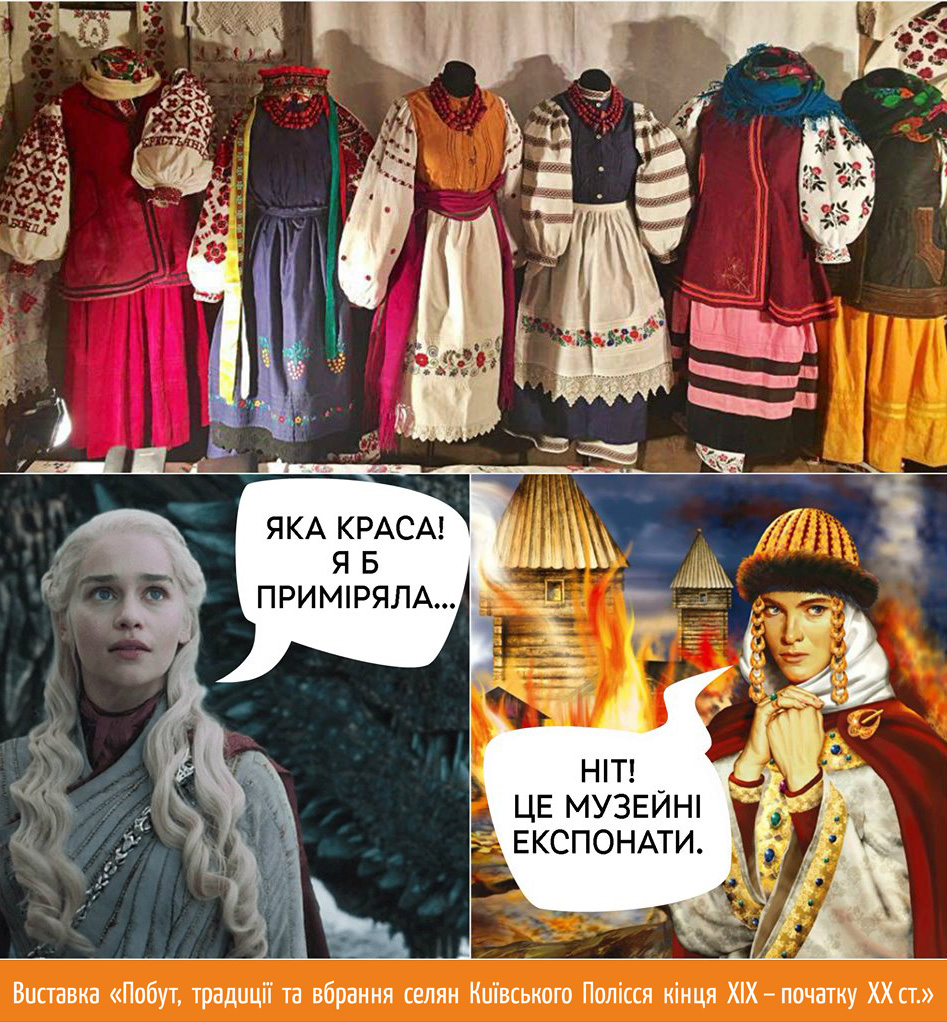Zemstvo’s School building (rural school)Vyshgorod Zemstvo’s school played a significant role in the life of the village.
The wooden building of the school is an architectural monument of local significance at the end of the 19th – early 20th century - is one of the few buildings of its kind that have survived in Ukraine.
Period of 19th – early 20th century was important because at that time, with the spread of mass parish schooling, schools of other departments also appeared: state, rural, zemstvo’s.
The Vyshgorod experiment on conducting school lessons belonged to the rector of the local Boris and Hlib temple Archpriest Fr.Mikhail Pavlovich Sikachinsky. Vyshgorod Church Parish School was founded in 1844.
Since 1875 the school was headed by a priest Fr. Petro Ioakimovich Koltnovsky, after studying in the seminary, worked as a teacher at a village school for five years. The first secular teacher at Vyshgorod Parish School was a retired non-commissioned officer Yevseviy Alekseyev. Then a secular teacher became a graduate of the Kyiv diocesan school Neonila Dmitrievna Finkovska. At the beginning of the 20th century Elizaveta Kindrativna Kobylkovska - the daughter of a priest of the Kyiv-Vvedensky women's community, who was a graduate of the women's college, taught the letters and arithmetic in Vyshgorod school.
In the industrial 20th century Vyshgorod parish school entered with a new mentor - Fr.Pavel Ioakimovich Koltnovsky. Prior to his appointment in Vyshgorod, the shepherd had twelve years experience in teaching, which was successfully implemented in the Vyshgorod Church Parish School. However, it did not take long time to supervise the educational process at the Vyshgorod school, "in 1905 it was closed due to the opening of a two-class rural school and the refusal of local peasants to provide funds for the maintenance of the local parish school".
In the 19th century different schools began to appear in the Kyiv region. These were state schools, which were called parish, but were subordinated to the Ministry of Education, founded by the Ministry of State Property, in state estates, and were aimed at the education of state peasants - these were also rural or zemstvo’s schools.
Rural schools had first three years of study, since the 1890s - four years, and at the end of the existence of zemstvo in some schools - seven years of study.
The program of zemstvo schools included: religion, reading, writing, accounts and singing. A type of three-year school, where one teacher was engaged simultaneously with students of three classes in one room, was developed by zemstvo figure of Alexander district in Ekaterinoslav, Baron M. Corf. He also made a program, prepared a special course for teachers, compiled and published a series of textbooks for students and teachers.
Girls were particularly difficult to study, because peasants considered education unnecessary and superfluous for them.
The constructed Zemstvo’s school was a wooden one-story building, P-shaped in the plan, 16.10Х30.75 m in size, in the middle of the north-eastern facade there were porches. The facades themselves are separated by vertical blades. The windows are decorated with different terraces. The roof of the room is four-slope, covered with iron.
According to the Zemstvo estimates in 1907 86440 rubles was allocated to the province for the maintenance and equipment of zemstvo’s schools in 1907; of this amount, 2372 rubles were allocated for the maintenance for Vyshgorod two-class schools, and 651 rubles -for equipment. This was the largest loan in the whole Kyiv region.
Only 117 pupils studied in Vyshgorod school.
The State Administration made loans for lease of premises for teachers' homes in Vyshgorod - 32 rubles from January 1 to May 1, 1908.
Vyshgorod Zemstvo’s school, opened in 1905, acquired a separate premises only in 1908.
The rural community gave Zemstvo’s school a mansion with an area of 1660 square fathom. On the territory of the estate there were a garden, a well, household buildings: a shed, cellar, a launderette. The school's room consisted of three classrooms, a teacher's, locker rooms, guard rooms, large and small (without windows) corridors. The heating was oven, the lighting was kerosene. In 1911, there were only 75 desks, all of them needed repair, teaching and writing supplies to all students for free.
The school library had 816 books for students, 158 for teachers. There was also a zemstvo folk library. As of January 1, 1912, 107 boys and 56 girls were enrolled in the school. Since 1906, classes for adults opened at zemstvo school. In 1913 the school was headed by Mykola Ivanovich Kopiyka.
In Vyshgorod Zemstvo’s school more than one generation grew. Collective farmers, doctors, engineers, public figures, servicemen, teachers were among former students: Maria Smolyarenko, Olga Nosikhina, Polina Prokopenko, Maria Prokopenko, Nadia Shulga, Lina Shevchenko, Andriy Kobernik, Mikhail Bragarnik. By the fate of each of the graduates you can learn the history of the country.
The program of the Zemstvo’s school included: religion, reading, writing, accounts.
The school also taught girls for embroidery, knitting, small sewing, and guys were taught military discipline.
The value of the Zemstvo’s school is that on its example one can see what school architecture was in the 19th and early 20th centuries, in which conditions the students of the village of Vyshgorod studied: they themselves used the stoves in the winter, looked after the school garden, worked in greenhouses.
Alla Plotnikova,
Head of the Department of the Protection of Monuments of the Vyshgorod Historical and Cultural Reserve


